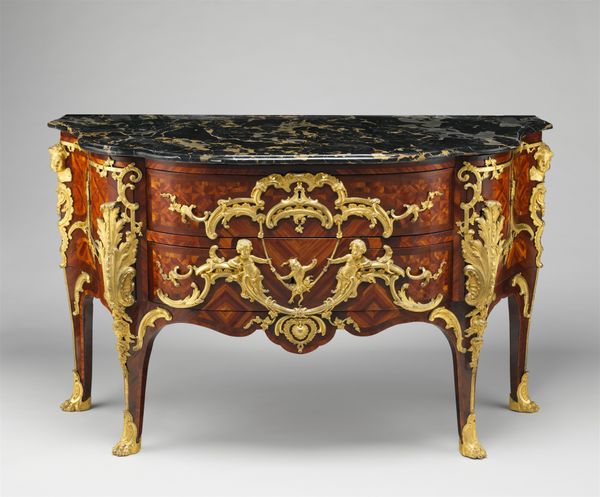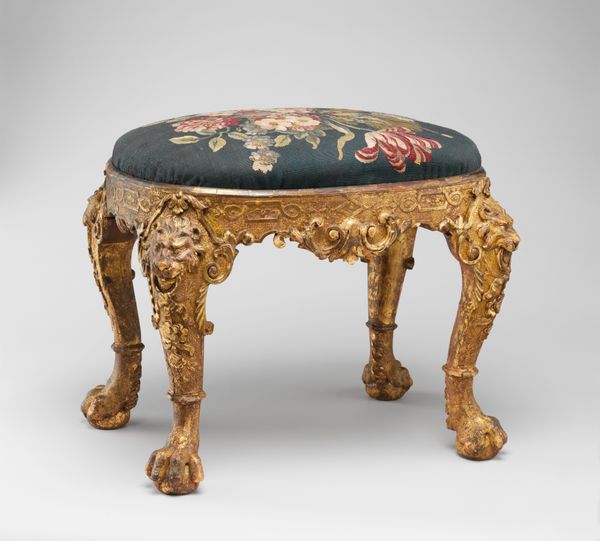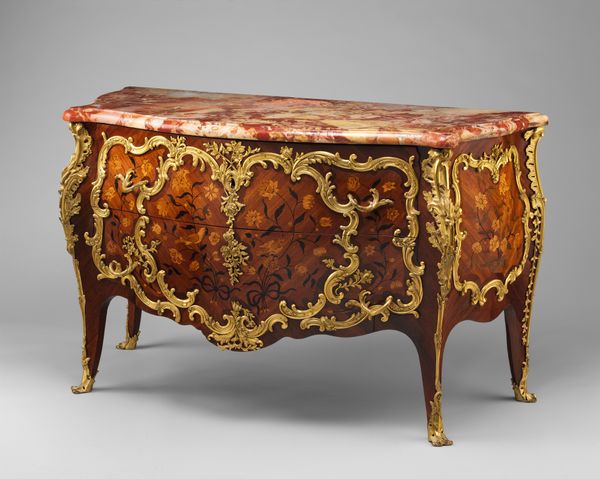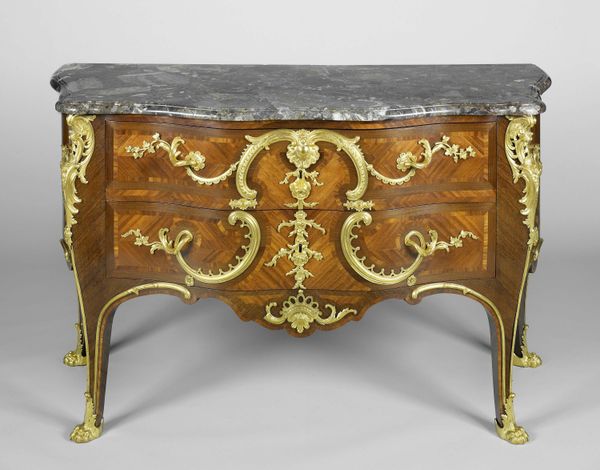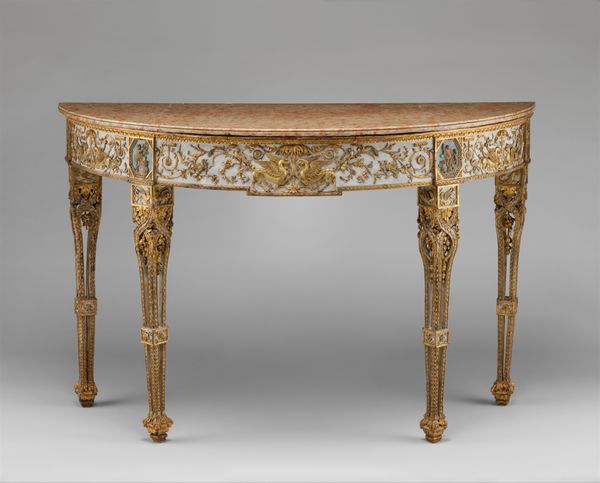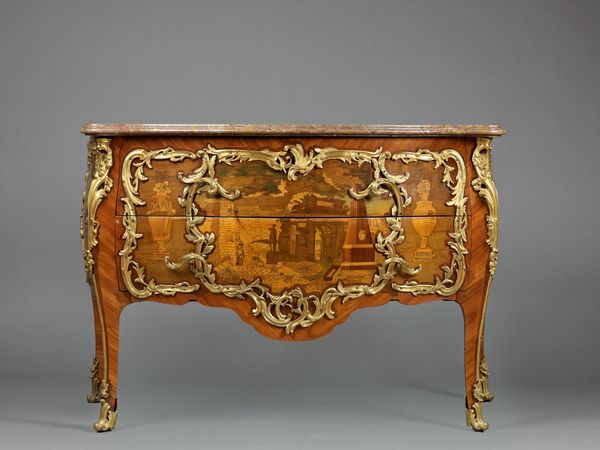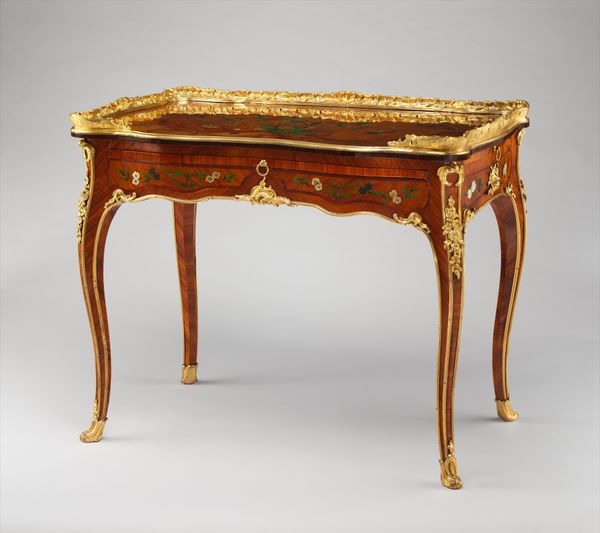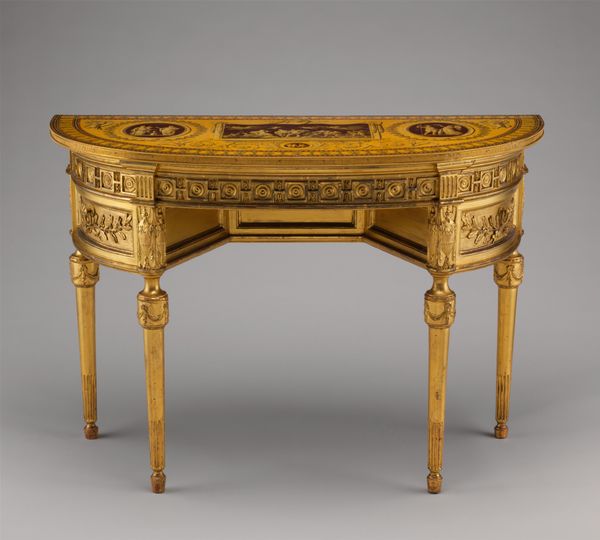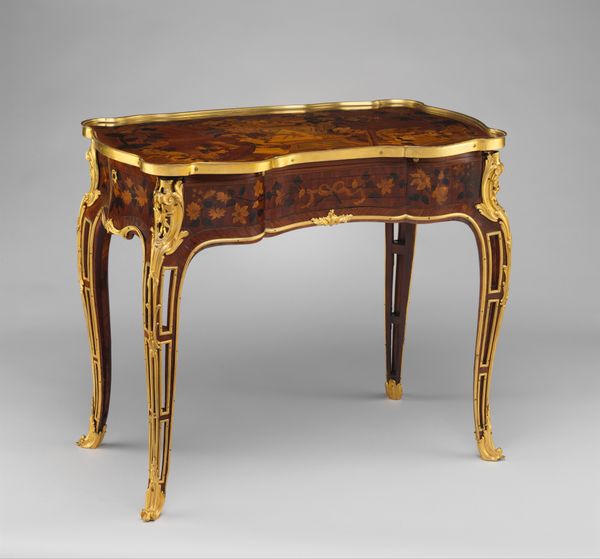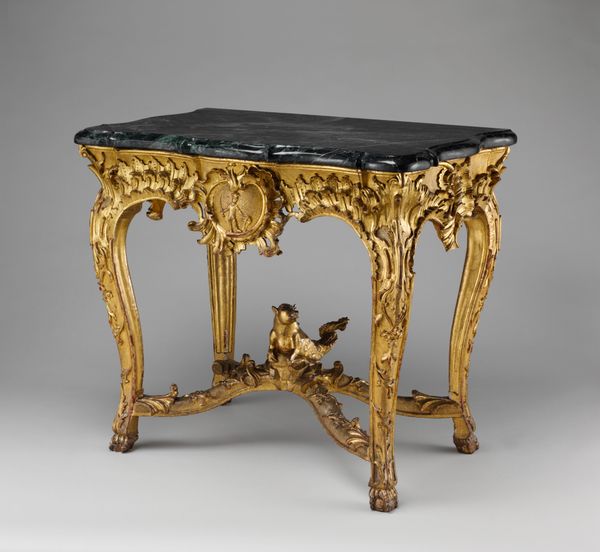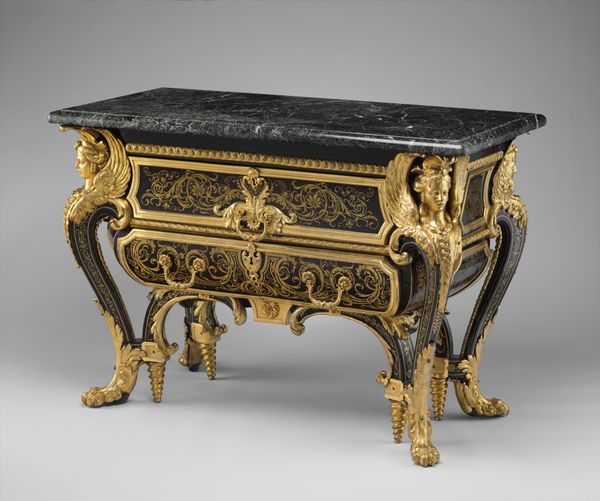
mixed-media, carving, sculpture, wood
#
mixed-media
#
carving
#
furniture
#
sculpture
#
wood
#
decorative-art
#
rococo
Dimensions: H. 35-1/2 in. (90.2 cm.), W. 37-1/2 in. (95.3 cm.), D. 21 in. (53.3 cm.)
Copyright: Public Domain
Curator: This elegant piece is a side table, sometimes called a commode en console, dating from around 1750 to 1765. It’s currently housed here at the Metropolitan Museum of Art, and was created by Bernard II van Risenburgh. Editor: It's remarkably striking, isn’t it? The combination of the black lacquer, the intricate gold detailing, and the swirling marble top creates such a lavish impression. I imagine it dominating any room it occupies. Curator: Indeed. What’s interesting is how van Risenburgh, though working in Paris, utilizes Asian lacquerwork, creating these miniature scenes, almost like chinoiserie. We have this cultural exchange and appropriation happening, directly impacting the production and appearance of furniture for wealthy Parisians. Editor: Right, the elite craving exotic aesthetics. You see how this piece embodies the Rococo era—an almost performative display of wealth and global influence. Consider who commissioned such a table; it wasn't simply about utility, but about projecting power, prestige, and engagement with the world. The commode becomes a statement of its owner’s place in society. Curator: Absolutely. The materiality here is significant. The wood used for the table’s structure, the lacquer’s origins in Asia, the labor of the ébénistes and ormolu workers involved... Each element reflects distinct networks of trade and craftsmanship. We have high art merging with specialized craft production. Editor: And let's not forget the location. Think about where this would have been placed, perhaps in a grand salon designed for social gatherings, or maybe displayed in a gallery as part of an expansive art collection. Museums later cemented its role as an exemplar of its age. Curator: Precisely! And the marble top! Each component tells a story of resource extraction, artisan skills, and cultural desires woven together to produce not only an art object, but also a commodity of considerable worth and aesthetic appeal. Editor: This brief exploration reminds us that even seemingly simple objects hold complex narratives. Curator: Agreed, every line, every material, reveals its history if we only care to look.
Comments
No comments
Be the first to comment and join the conversation on the ultimate creative platform.
